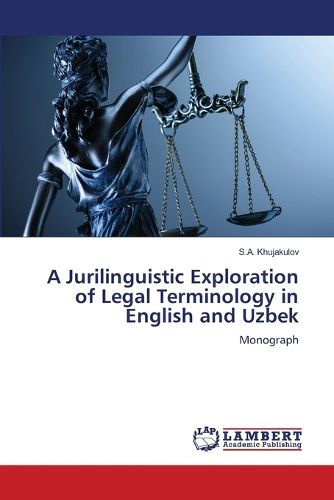Readings Newsletter
Become a Readings Member to make your shopping experience even easier.
Sign in or sign up for free!
You’re not far away from qualifying for FREE standard shipping within Australia
You’ve qualified for FREE standard shipping within Australia
The cart is loading…






This monograph presents a comprehensive Jurilinguistic investigation into the lexical and semantic aspects of legal terminology in English and Uzbek. It explores how legal concepts are constructed, represented, and communicated through language within two distinct legal traditions - the Anglo-American common law system and the post-Soviet civil law system. The study brings together insights from linguistics, law, comparative terminology, and translation studies to analyze the structural and semantic characteristics of legal terms and to assess the extent to which they align or diverge across these two languages.The monograph examines legal terms from both languages through a multi-dimensional framework that includes word formation processes, morphological patterns, semantic fields, and cultural specificity. It analyzes how legal meaning is constructed and how terms acquire or lose specificity across linguistic boundaries. This is particularly important for legal translators, legal drafters, comparative law scholars, and those involved in cross-border communication and international law.
$9.00 standard shipping within Australia
FREE standard shipping within Australia for orders over $100.00
Express & International shipping calculated at checkout
This monograph presents a comprehensive Jurilinguistic investigation into the lexical and semantic aspects of legal terminology in English and Uzbek. It explores how legal concepts are constructed, represented, and communicated through language within two distinct legal traditions - the Anglo-American common law system and the post-Soviet civil law system. The study brings together insights from linguistics, law, comparative terminology, and translation studies to analyze the structural and semantic characteristics of legal terms and to assess the extent to which they align or diverge across these two languages.The monograph examines legal terms from both languages through a multi-dimensional framework that includes word formation processes, morphological patterns, semantic fields, and cultural specificity. It analyzes how legal meaning is constructed and how terms acquire or lose specificity across linguistic boundaries. This is particularly important for legal translators, legal drafters, comparative law scholars, and those involved in cross-border communication and international law.